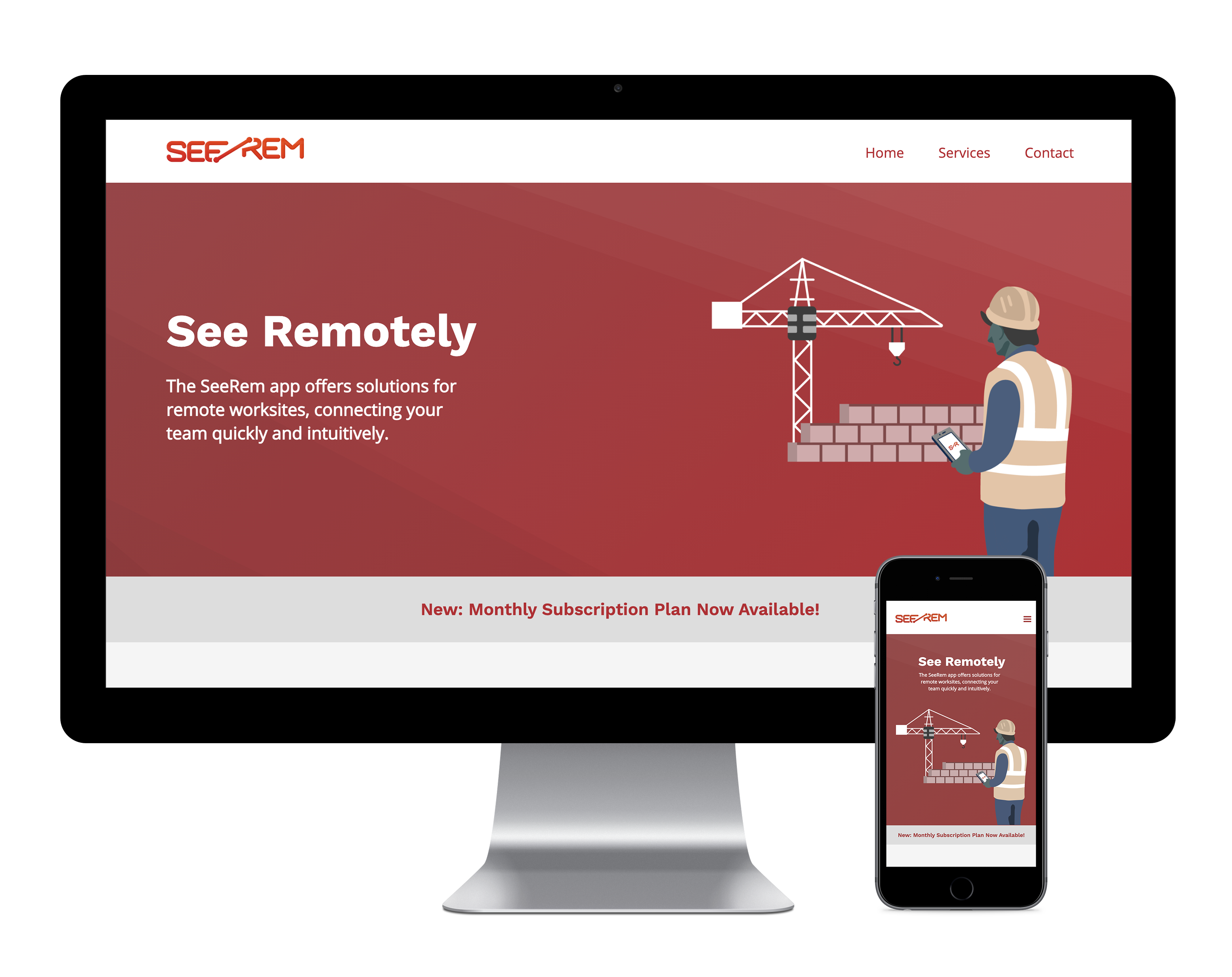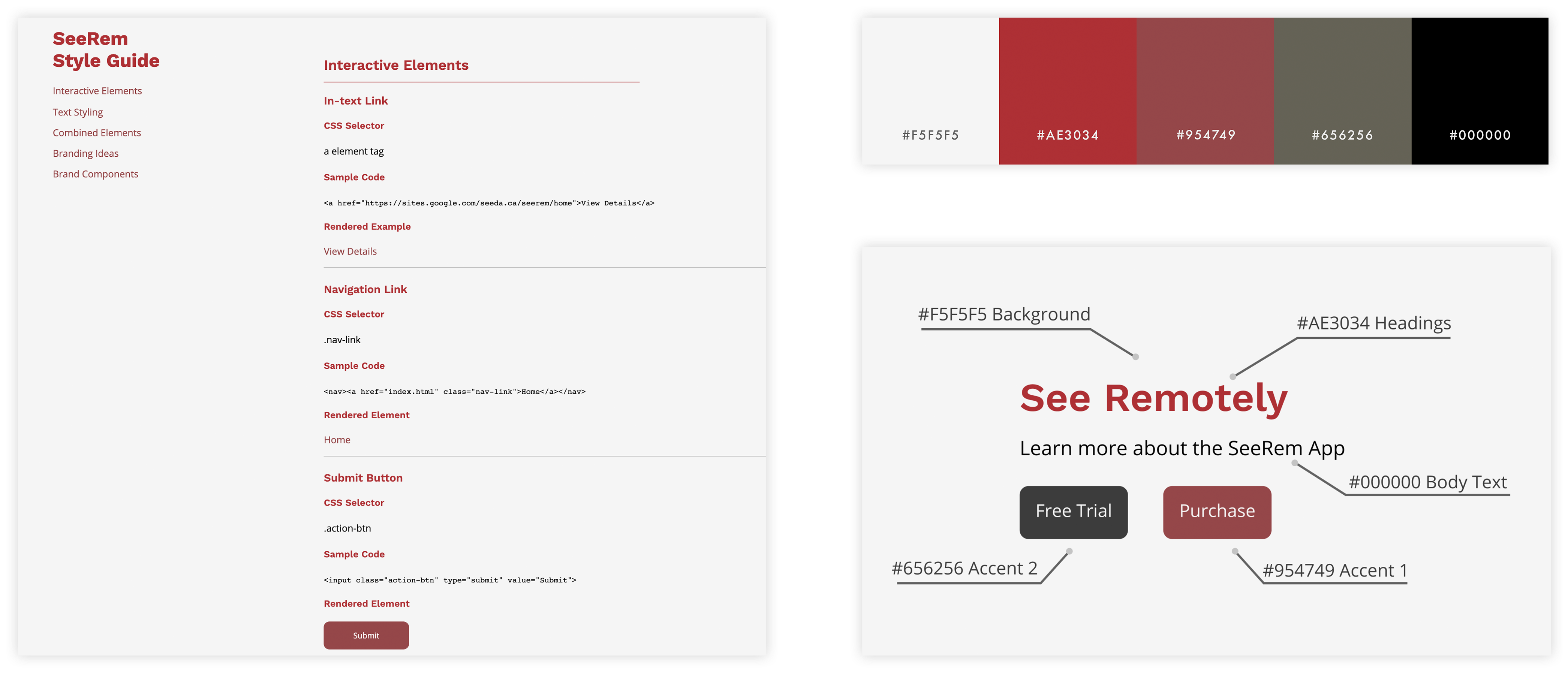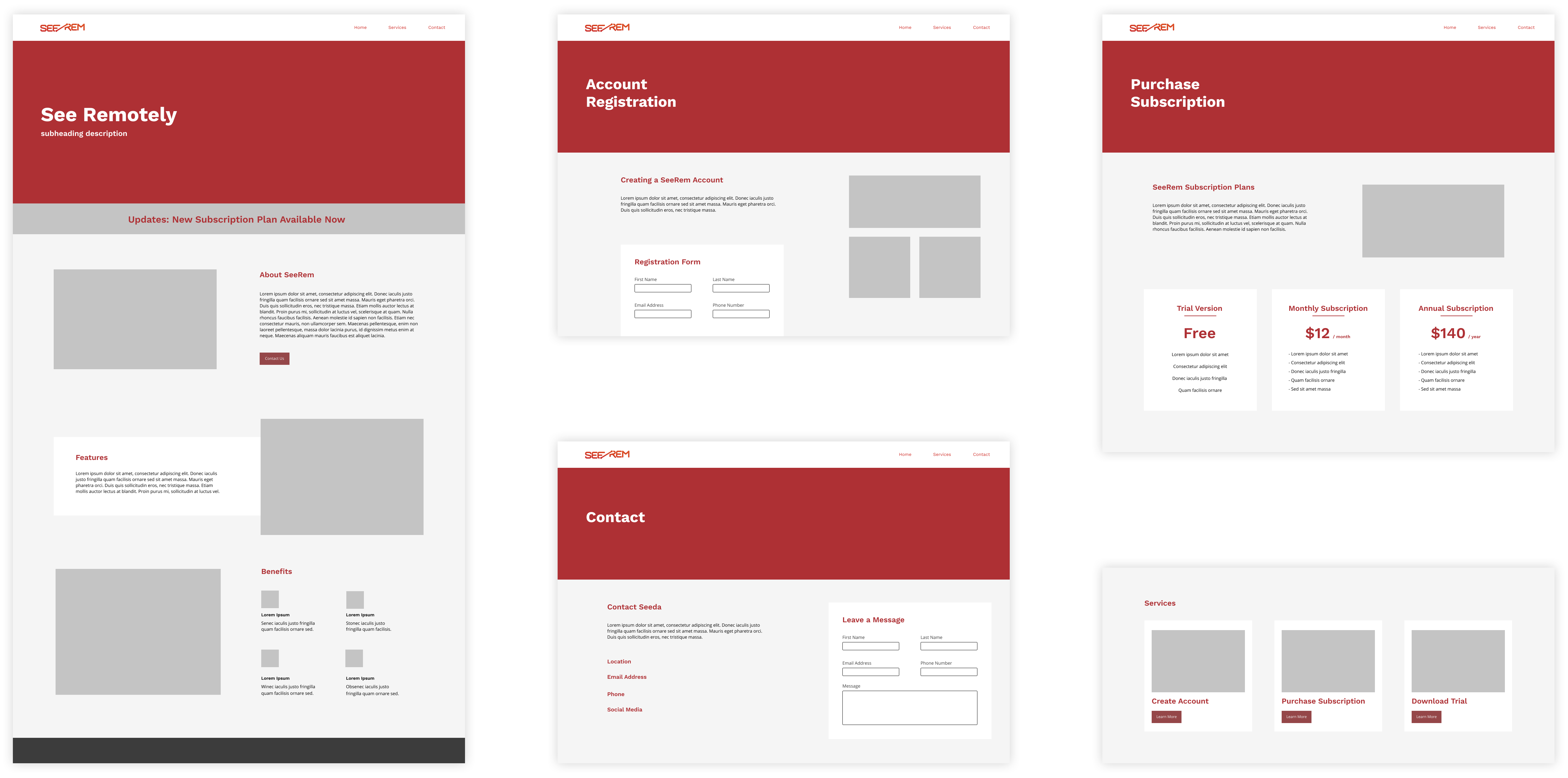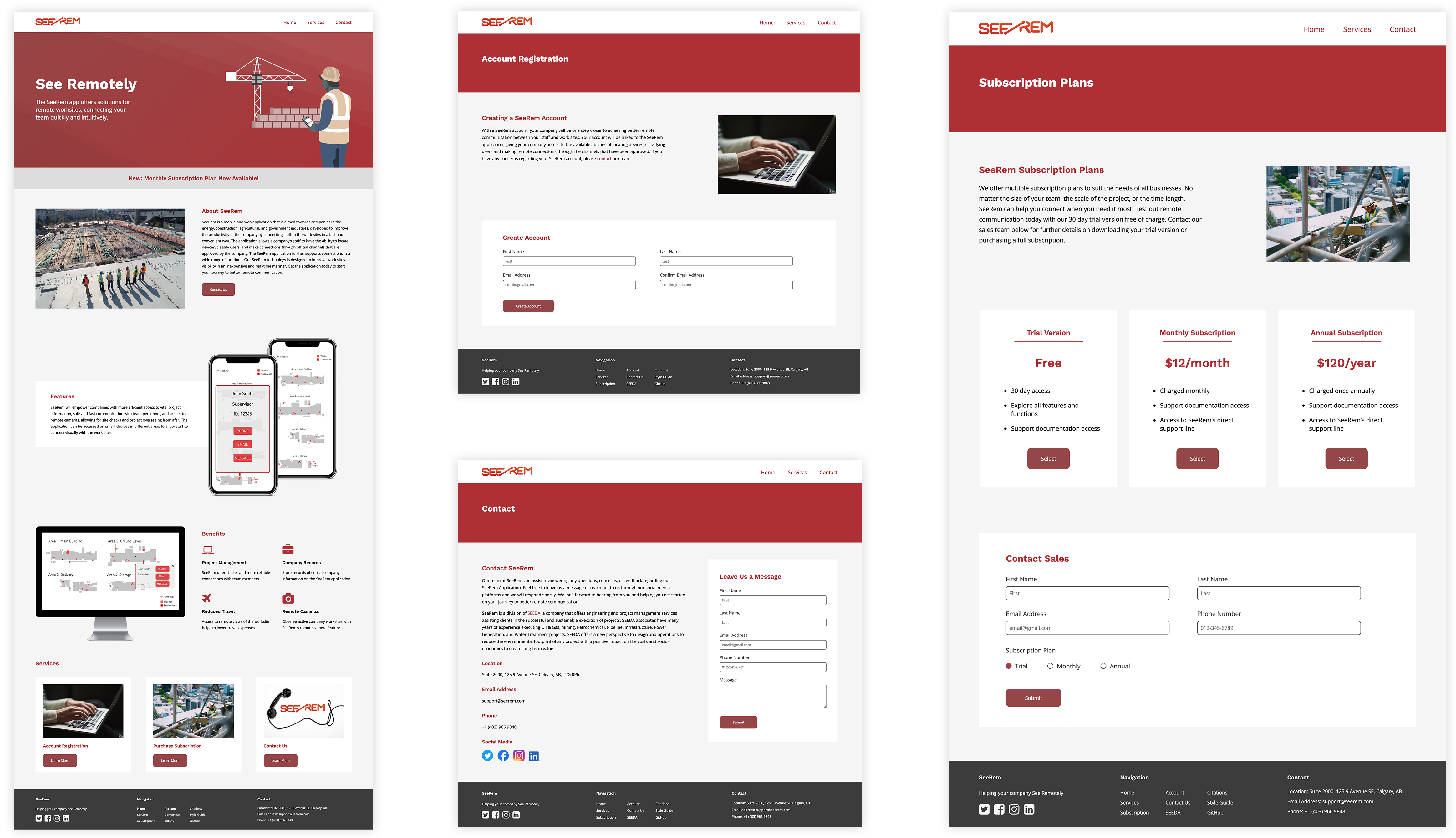Overview
Working in a team of two, we collaborated with the company SEEDA to develop a front-end website for their SeeRem division. The objective of the academic project was to design and build a functioning website for SeeRem to help potential customers learn more about their application and connect with the sales team. By communicating with the company, I was able to learn more about the service they were offering, which assisted in the process of better designing for the intended purpose of the site. The end product was a fully developed front-end responsive website that promoted the SeeRem application, which led to an internship position with the company in 2021.





